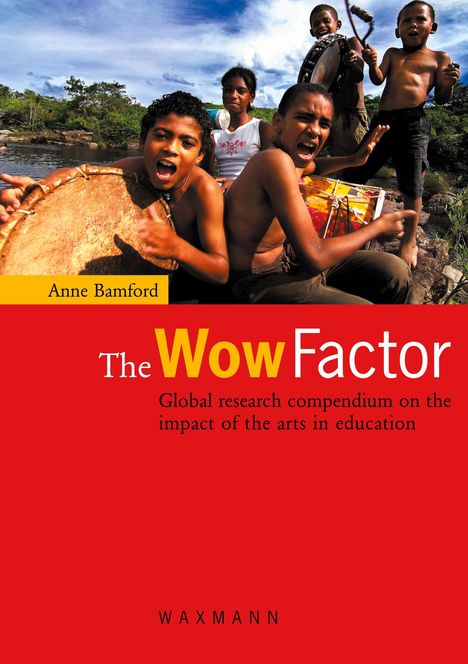Anne Bamford: The Wow Factor, Kartoniert / Broschiert
The Wow Factor
- Global research compendium on the impact of the arts in education

- Verlag:
- Waxmann Verlag, 03/2025
- Einband:
- Kartoniert / Broschiert
- Sprache:
- Englisch
- ISBN-13:
- 9783830916178
- Artikelnummer:
- 7894486
- Umfang:
- 180 Seiten
- Copyright-Jahr:
- 2006
- Gewicht:
- 248 g
- Maße:
- 210 x 149 mm
- Stärke:
- 14 mm
- Erscheinungstermin:
- 25.3.2025
- Hinweis
-
Achtung: Artikel ist nicht in deutscher Sprache!
Klappentext
More than ever before, the arts are shaping and influencing our daily lives through the media and the creative industries. The arts are no longer confined to museums and theatres, but are adding value to our national economies and improving the quality of education. This has implications for arts education. However, unlike other Subjects taught at schools, the arts have rarely made their purpose clear: Why are they taught? What is good arts education? And what are the benefits of teaching creative Subjects or using creative ways to teach?
In 2004 Professor Anne Bamford conducted the first international analysis of arts education research for UNESCO, in partnership with IFACCA and the Australia Council. Comparing data and case studies from more than 60 countries, the book analyses the differences between 'education in the arts' and 'education through the arts'. While appreciating that arts programmes are embedded in their unique social and cultural contexts, Professor Bamford develops internationally comparable standards for quality arts education. In addition, she identifies a number of concrete educational, cultural, and social benefits of arts education.
This definitive work is of major interest to policy-makers, educators and artists.
Biografie
Professor Anne Bamford is Director of the Engine Room at the University of the Arts London and has an international reputation for her research in arts education, emerging literacies and visual communication. Through her research as a World Scholar for UNESCO, she has pursued issues of innovation, social impact and equity and diversity. She has conducted major national impact and evaluation studies for the governments of Denmark, The Netherlands, Belgium and Australia.Anmerkungen:
Bitte beachten Sie, dass auch wir der Preisbindung unterliegen und kurzfristige Preiserhöhungen oder -senkungen an Sie weitergeben müssen.

